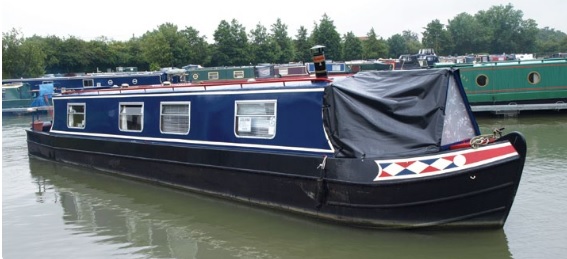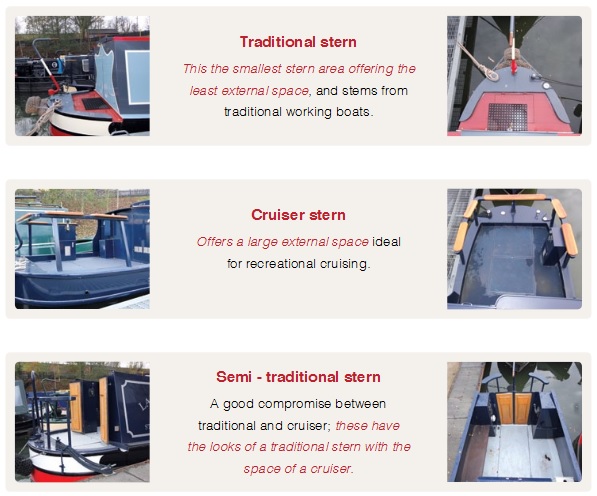What to consider when buying a Narrowboat.
If you are looking forward to 2019 boating season to realise your dream and purchase a Narrowboat, you will find this a must read!!
Not everyone takes to boating, whether it’s just
the occasional weekend, long holidays or living aboard full time. So our best
advice before we go any further is try before you buy. Hiring a narrowboat
will give you a very good idea of what life is like on the canal and if it is
for you.
Think about what you will use the narrowboat for
and how many people will be on board at any time.
Knowing whether it will
be used for living aboard or weekend use only will help when it comes to
choosing the size of narrowboat that is going to be right for you and your
family.
The great thing about boating is there is a boat to
suit every budget. So everyone who expresses an interest in owning a
narrowboat can have the opportunity of owning a one.
.jpg)
Knowing a little more about narrowboats
in general is going to help you greatly when it comes to buying your own. A
great way to start learning about narrowboats is to read our buyers
guide. Generally narrowboats are all the same width, but come in variety of
length and stern type.
Running costs (cost of ownership)
Money matters are also important when
owning a floating home. Ask other boaters what the average costs of running a
narrowboat is for weekend use or living aboard full time. Many boaters
are more than happy to share their experience and knowledge, so don’t be afraid
to ask. Of course depending on each person’s circumstance the costs will vary. Some expenses you will need to consider are – moorings, licence,
insurance, maintenance, fuel costs, blacking and other day to day stuff.
Moorings
Residential moorings can be hard to
find, so it is always advisable to look into this before buying a narrowboat.
Survey
Would you buy a house without a survey? I’m guessing unless you are a
builder or in the industry the answer is going to be No! So buying a
second hand narrowboat without a survey isn’t the smartest move unless you know
what you are doing. The whole idea of the survey is to protect the buyer so you
know exactly what you are buying. If you are buying the boat, have it
surveyed by a qualified Marine Surveyor who will advise of any faults on the
hull and with the boat’s internal systems. Usually an extensive check will cost
you around 300 GBP but is definitely worth the effort. If you want to be on the
safe side, make a full “out of the water” survey to check the boat also from
underneath. Marinas can arrange such a survey within 1-2 weeks.
Use a Brokerage Company
Okay, so we are bound to include this
one, but think about the advantages. Using a good brokerage company has so many
benefits. So let’s just name a few – lots of experience, a variety of boats all
in one location, a broker will negotiate on your behalf saving you any stress,
and so much more.

Cruising
Can I tell you before
you buy a narrow boat that it is so much fun! Cruising the beautiful UK
canal networks will give you some fantastic holidays or a totally different way
of life if you choose to liveaboard full time.
Engine
What general age and condition does the engine have?
Newer boats have water-cooled diesel engines. Older boats have noisier
air-cooled engines. If the engine room is clear and in order, and the engine block is clean from
oil and dirt, it indicates basically a good service.

Things to look for and
top tips:
Is the engine block super clean and maybe freshly painted? This could
indicate a high pressure waterblasting just for the sale. In fact, our
second-hand engine had decent rust below a nice blue painting.
Are there any signs of glue? Hard to believe, but our engine was partly
made proof with glue instead proper fixing. Of course this was leading to
problems later.
Gearbox: Are there any leaks from the stern gear? If there are, it may
need repacking or adjusting. Can you see any sort of leaks? Dark brown oil stains can indicate a leak
in a gasket which could lead to an expensive repair. Is the water in the engine room contaminated with oil? This would
indicate heavy leaks. Is the oil filler neck not coated with thick, black deposits?
·
Check the dipstick – With old
boat engines you will find mostly dark colour, but in any case it shouldn’t
smell burnt. Start the engine from cold: is it easy to start? Are there any abnormal
noises? Does the oil warning light go out as soon as the engine starts?
· Are there any signs of excessive visible exhaust emissions? The smoke
should be white (water burning) just in the beginning when the engine is cold.
Older engines can have a slightly blue smoke (oil burning), but never should be
black – this indicates heavy oil burning and serious engine problems..
Let the engine run for a while with slightly higher revs – does the
temperature stay in the green / neutral area (usually around 70-80 degrees C)
or does it go up to unhealthy 90-100 degrees?
Batteries
Are there at least 2-3 leisure batteries coupled with one starter battery? Is there a good battery management system regulating the flow of current
into the batteries?
Does it have a protection for overcharging and complete discharge? Does it have a permanent voltmeter to easily check the state of charge? Does the boat have an electrical hookup & cable (when mooring inside
a marina)? Does the boat have an inverter to convert 12 volt battery power to 240
volts?
Ask the owner or check yourself how long you can run the appliances
without recharging the batteries. Depending on the load (lights, water pump,
TV, 12V fridge), the batteries should keep at least for a day. Listen carefully
to any undertones. The batteries are vital and expensive. If it’s a liquid battery – Is it properly serviced? Remove the battery
vent plugs and check the liquid level. Does it cover the top of the plates?

Apply a digital voltmeter. 12.6 V + indicate full charge, 12.06 V are
50%, less then 11,58 V are critically (20%). 10.5 V are 0%, left like this for
more then a week will completely destroy the battery (sulphation). Check the price of the battery model with your smartphone. Batteries
below 90 GBP will usually do max. 300 deep discharges.
·
Is the boat equipped with solar panels? Good! 150W are enough for lights
and water pump even in the winter. 300W are needed to run a 12V fridge or TV.
How is the general impression? Has the boat been well looked after?
Outside
the boat
·
When was the hull last blacked?
A narrowboat hull needs to be pressure
washed and painted with bitumen every two to three years in a dry dock to
protect the steel from corrosion – especially around the waterline. Take care,
sometimes even new boats can suffer premature pitting.
·
How is the condition of the hull? Steel thickness should be 10mm on the
hull base, 6mm on the sides and 4mm on the roof.
Check painting with a little hammer for rust underneath. Is the narrowboat long enough? For living aboard you should go for
52-72ft length, or wide beam (15ft width). Check varnishing and onboard equipment. Are there central, fore and aft
ropes for easy mooring, a windlass (lock key) and mooring pins? Lies the boat right / left balanced in the water? If not, you need to
balance it with weights. How much water is in the engine room (around and below the engine)?
When the propeller is not sealed well, if there are other leaks, or the rain
drainage is not working, the water level can increase within 1-2 weeks to
a dangerous level.
This happened to us once, and we know boats that have been sunken because of
water in the engine room.
Inside the boat
Check for the smell of damp and mould – this means that water is inside
the boat.
If you can smell a heavy air freshener, suspect it – what’s it hiding?
Is the fridge, cooker, lights, heating system and shower in good
working order? Go through all appliances of the boat one by one. Is the boat equipped with a solid fuel stove and / or with gas/diesel
heating? Gas/diesel burners can run radiators and provide hot water quickly –
but they are lacking a warm glow in the lounge area. Is there a central water heating or just one stove for all the boat?
Check if the radiators are working.
On our boat, the stove in the living area was not powerful enough to heat all
the boat – that’s why we couldn’t use the second room all winter long. Is the boat’s ceiling high enough? Can you stand comfortably inside the
boat when you are tall?
·

Is there a bath or a shower on board? Check if the hot water supply is
working, and if there are any leaks inside the system/boiler. How much storage space do you have? General advice: the more, the
better. Look inside the wardrobe and smell for mould. Are there any signs of water under windows/hatches?
Every boat is wet from the inside – the only question is how much.
·
Have a look in cupboards and hatches. Look for hatches through the floor
into the bilge, i.e. below shower, kitchen. Be wary if you find any water in
the bottom of the boat. Does the boat have a pump-out toilet or portable cassette? Pump-outs
have a fixed tank which can be emptied at a pump-out station for a small fee.
Portable toilets (Porta Potti) are more flexible, can be emptied easier and
usually without a fee – but you need to do this more frequently and carry your
own excrement.
Hope you find this blog informative and helpful.
If we can be of any assistance,
please do not hesitate to call the office (01270 528251).
Happy boat finding.